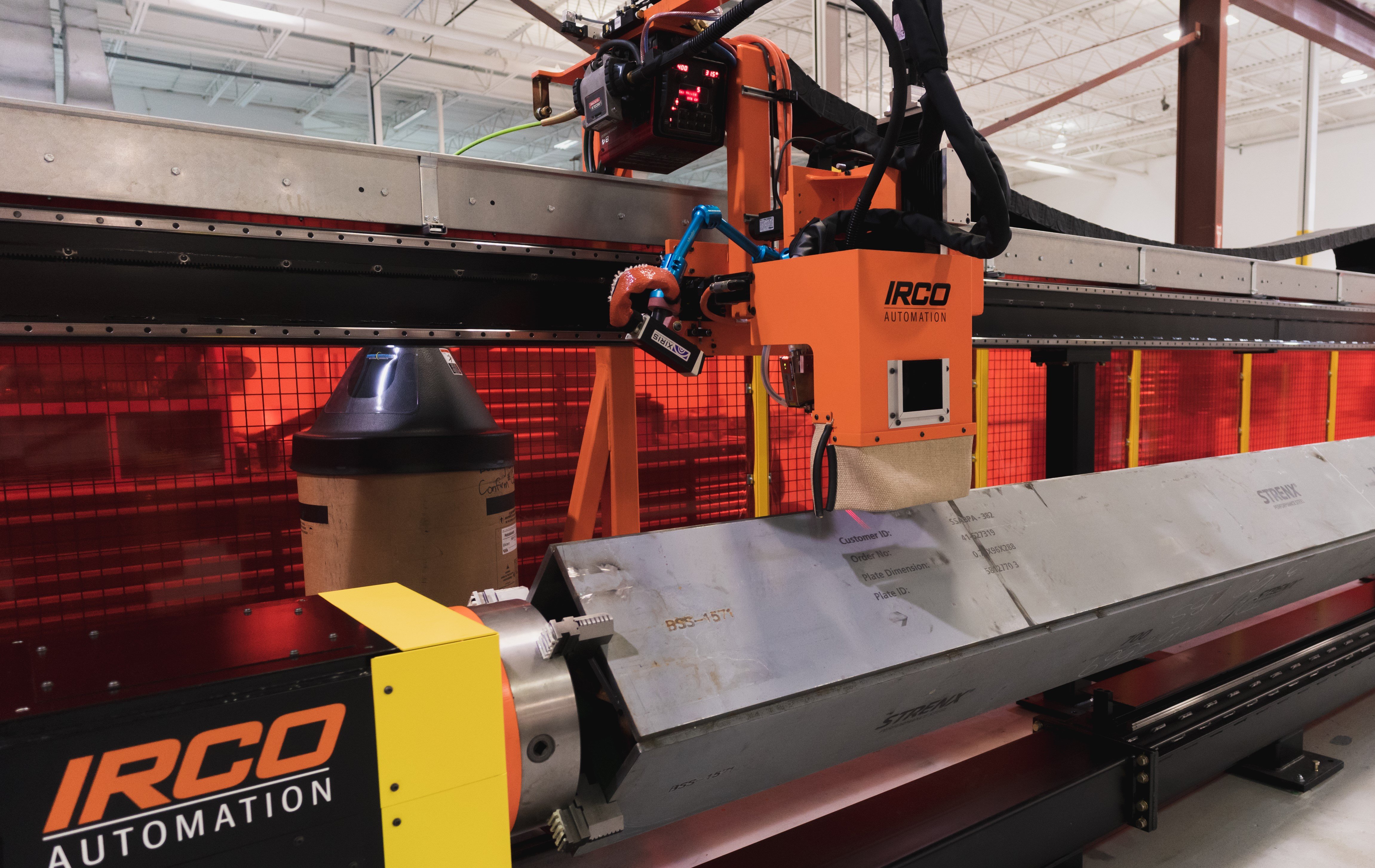If you use slip rings and rotating torches in cladding, there now is a way that you can see the welding process much more clearly than ever before.
Xiris has successfully tested our XVC-1000 and XVC-1000e weld cameras on rotating welding machines using slip rings—and the cameras work perfectly! Unlike other cameras with electrical noise interferences, the Xiris Weld Cameras are not affected by the electrical noise and interferences common with running video over a slip ring.

Even Over a Slip Ring Connection, Xiris Weld Camera Maintains a Noise Free Image
Slip rings are electromechanical devices that are designed to pass electrical signals from a rotary source (such as a weld camera mounted next to one or more torches that rotate around the inside of a part) to a stationary receiver (such as a computer which receives the video data from the cameras). They are devices that allow for the transmission of an electrical signal and power. By employing a metal brush that rubs against a rotating metal ring, the video signal coming from the camera travels through the connection, avoiding the use of solid cables that could potentially twist indefinitely until damaged.
Weld cameras are making their way into a variety of cladding operations. However, it is very difficult to monitor cladding on the inside of the pipe, especially when the pipe stays stationary and the torch rotates. This can be a problem for a standard connection: as the torch rotates continuously, cables cannot withstand very many rotations before they break. Therefore, the use of slip rings would be a natural solution. However, slip rings typically are used for motor signals and power, applications that are a little more tolerant of electrical noise than video signals. Typical industrial cameras haven’t worked well with slip rings because their analog signals are not resistant to electrical noise.
The problem is that cladding is typically done using a TIG welding process, which is notorious for generating lots of electrical noise that can kill standard electronics due to its high-frequency starts.
But the Xiris weld cameras don’t die or short-circuit from high-frequency welding noise, even with a slip ring. Our cameras and the welding machine keep working together when used with a slip ring—allowing operators to remotely see high dynamic range (HDR) images of their cladding process, in real time, on a computer screen, remotely. The Xiris weld cameras with HDR capability permit operators to see both the super-bright weld arc and its dark surrounding background, with no need to stop the process.
We’ve tested our HDR weld cameras on slip-ring applications numerous times, and the advanced electronics in the cameras have repeatedly been up to the task. We’d be glad to demonstrate on your set-up.
This is new technology, but it’s ready now to improve the efficiency of your rotating-torch cladding.






